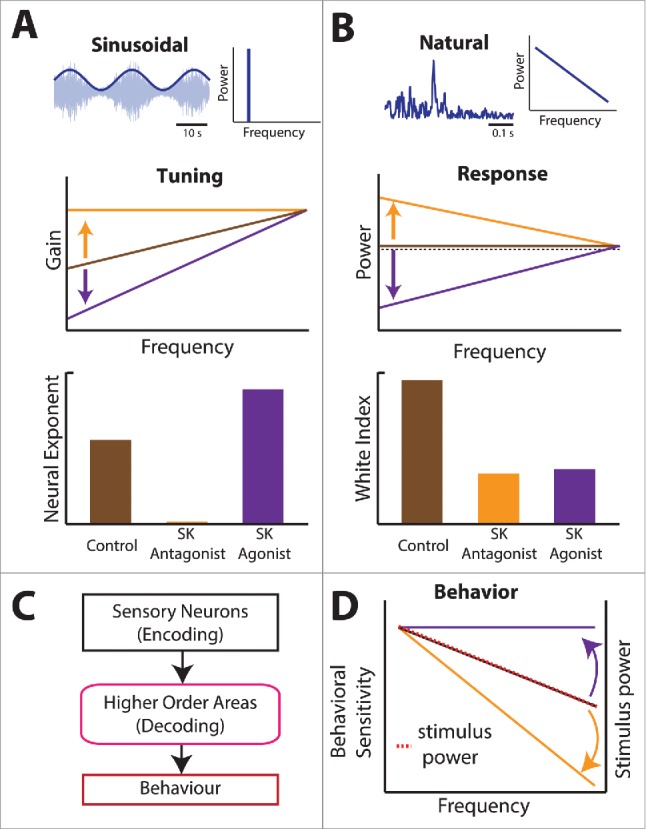Figure 8.

SK1 channels are key determinant of frequency tuning and optimized coding of natural 2nd order stimuli. (A) Effects of SK channel antagonists (orange) and agonists (purple) on frequency tuning to sinusoidal 2nd order stimulus (top). SK antagonists make tuning less high-pass, while agonists make tuning more high-pass (middle), thereby leading to a lower and higher neural exponent respectively (bottom). (B) Effects of SK channel antagonists (orange) and agonists (purple) on the neural response to natural 2nd order stimulus. SK channel antagonists lead to a neural response whose spectral power decreases with increasing frequency, while agonists lead to a neural response whose spectral power increases with increasing frequency (middle). In both cases, the neural response power is not independent of frequency as reflected by a lower white index (bottom). (C) Summary of information flow in the brain. Information about the stimulus is encoded by sensory neurons and are decoded by higher brain areas, thereby leading to perception and behavior. (D) Application of SK channel antagonists and agonists in ELL pyramidal cells has strong influence on the organism's behavioral responses as quantified by sensitivity. Under control conditions, there is a match between stimulus power (dashed red) and behavioral sensitivity (solid black). Application of SK channel agonists makes behavioral sensitivity more independent of frequency (purple). In contrast, application of SK channel antagonists makes behavioral sensitivity decrease more steeply with increasing frequency (orange). In both cases, there is a mismatch between behavioral sensitivity and stimulus power.
